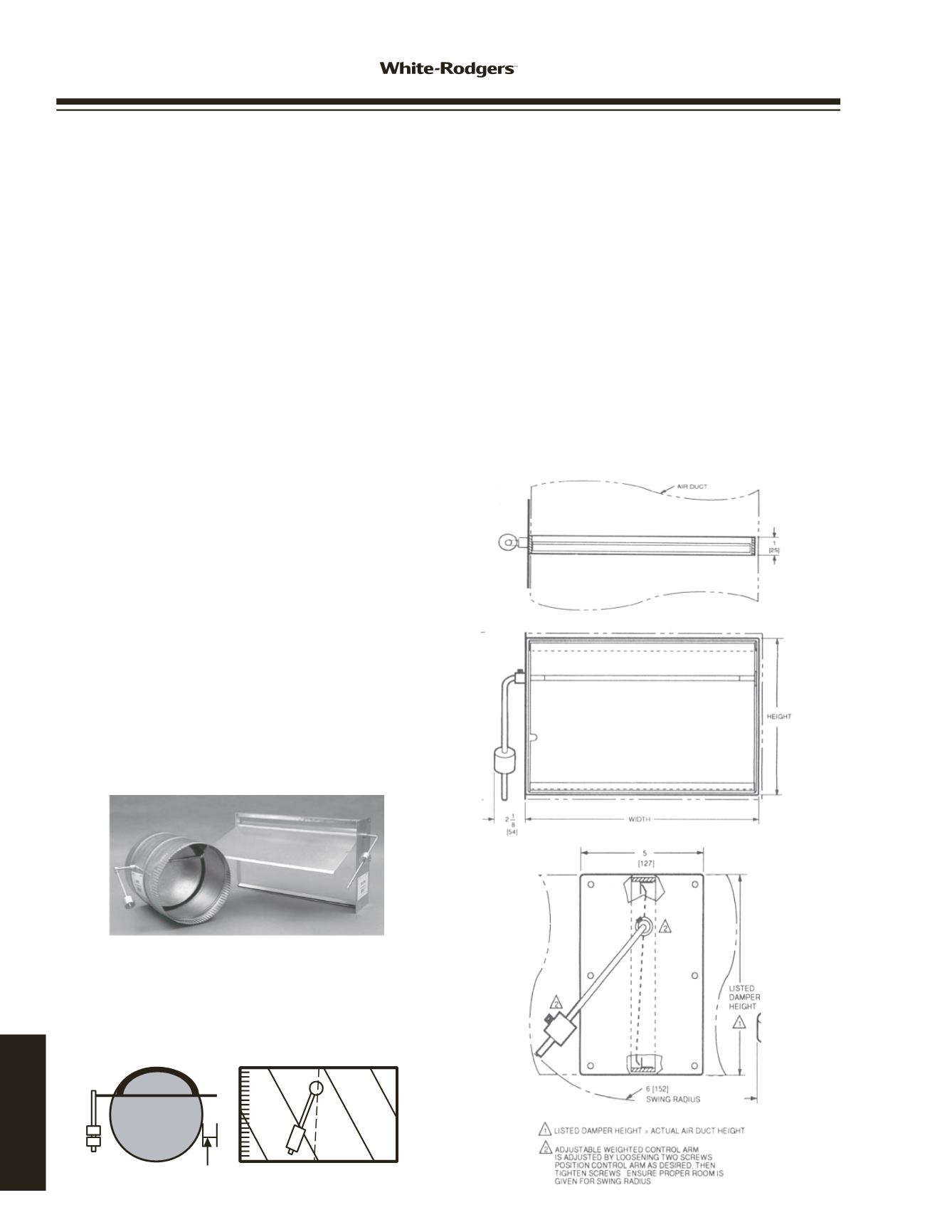

CSPRD STATIC PRESSURE
REGULATING DAMPER
BAROMETRIC RELIEF DAMPERS
The Static Pressure Regulating Dampers, Model CSPRD, are barometric
relief dampers used to by-pass excess air pressure on zoned systems.
The CSPRDs automatically respond to the air pressure in duct as the
various zone dampers open and close.
As zone dampers close off air to a number of zones, the supply air
pressure in the duct system will increase. This increase in air pres-
sure can increase the noise level and reduce the flow of conditioned
air through the HVAC Unit. Using the CSPRD solves this by automati-
cally compensating for the excess air pressure by opening on the
increased pressure and relieving the excess air. The CSPRD helps
maintain a constant air pressure in the duct system. This reduces
noise that is caused by high air pressures and velocities, as well as
maintains a constant volume of air (CFM) through the duct system.
Maintaining a constant volume of air through the HVAC System keeps
the efficiency of the system at its maximum.
Calculating By-Pass Air Requirements
Determining the need for by-pass air and the size of the SPRD re-
quired is very simple. It can be very simply calculated by knowing the
total CFM capacity of the HVAC unit (T
CFM
) and subtracting the CFM
capacity of the smallest zone (S
CFM
) will equal the CFM of air required
to be by-passed (B
CFM
).
T
CFM
-
S
CFM
=
B
CFM
Total CFM Smallest Zone CFM By-Pass CFM
Once the by-pass amount of air is known, use the chart above to se-
lect an appropriately sized by-pass damper. It is always recommend-
ed to have a larger size by-pass than having one that is too small. It is
much easier to reduce by-pass air through the damper or close it off
than having to increase the size of the by-pass duct and/or damper.
Location
Selecting a location to place the SPRD is very important for overall
system operation. Ideally the best place for the SPRD is as far away
from the air handler as possible and before any zone dampers. In an
extended plenum application where zones come off the side of the
main trunk, the end of the extended plenum is the ideal situation.
In most residential applications however the zone dampers are right
at the plenum of the air handler. In this application the only location
for the CSPRD is at the plenum. In this application, especially when
the CSPRD is ducted to the return, it is recommended that a freeze
protection, Model AFC, be used as well as the supply air sensors with
the zoning panel to protect the equipment from overheating or cooling
due to the return by-pass.
10”
Diameter
2 5”
Most CSPRD installations are typically in horizontal ducts where
the CSPRD control blade will close vertically. The CSPRD can also
be installed in vertical ducts as well, however the counter balanced,
weighted arm must be adjusted to offset the weight of the blade.
See installation instructions for further information on this application.
The CSPRD has a weighted control arm that counter balances the
weight of the damper blade. The weight adds pressure to the blade
to control the amount of air by-passed. The weight can be adjusted
up or down on the arm depending upon the amount of air to be by-
passed.
In addition to the adjustment of the weight the arm can also be moved
in order to add leverage for the weight to push against the blade to
add more resistance.
To adjust the CSPRD, first all zones dampers must be open and the
fan operating. When all dampers are open the CSPRD should be
closed. In some instances the damper may be open slightly, espe-
cially when the CSPRD is installed as a true by-pass between the
supply and return ducts. This occurs frequently when the damper is
closest to the plenum.
www.white-rodgers.com218
TECHNICAL HELP















